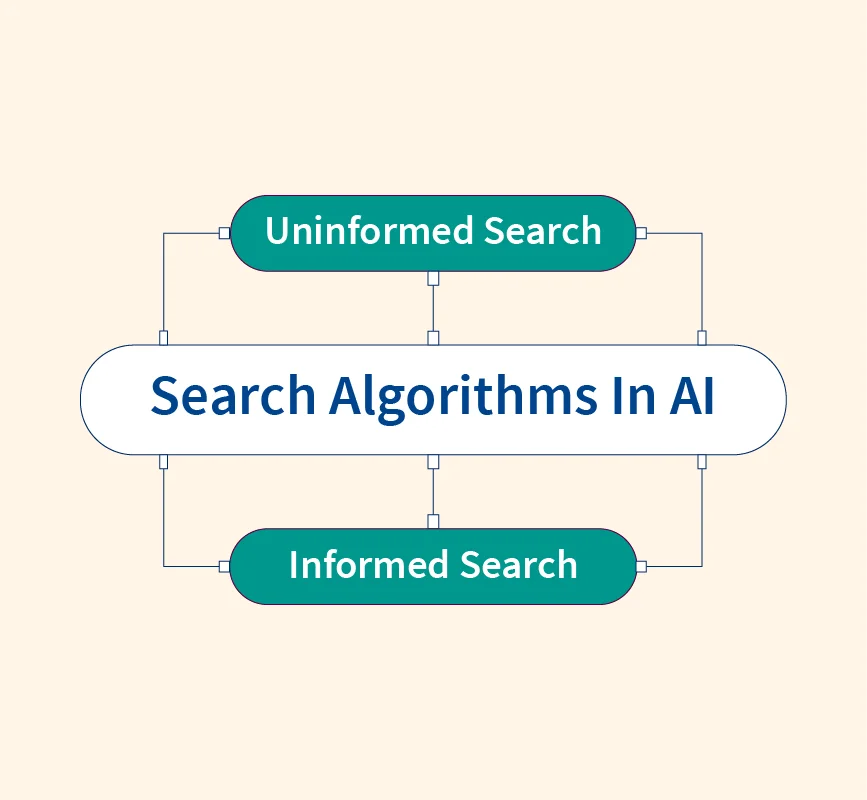Artificial Intelligence (AI) has become an integral part of our daily lives, from personalized recommendations to autonomous vehicles. However, as AI systems grow more complex, their decision-making processes often become opaque, leading to what is called the “black-box problem.” This lack of transparency raises concerns about trust, fairness, and accountability.
Explainable AI (XAI) aims to solve this by making AI decisions understandable to humans. It provides insights into why an AI system made a particular decision, helping users build trust and ensuring compliance with ethical and legal standards.
What is Explainable AI
Explainable AI (XAI) refers to a set of methods and techniques designed to make AI systems’ decisions understandable and interpretable to humans. It aims to bridge the gap between complex AI algorithms and the need for transparency, ensuring that users can trust and validate AI systems.
Principles of Explainable AI
- Transparency: AI systems operate openly, enabling users to understand decision-making processes.
- Fairness: Ensures unbiased decisions for equitable treatment across all groups.
- Trust: Builds user confidence by making AI decisions predictable and understandable.
- Robustness: Guarantees reliable performance under various conditions.
- Privacy: Balances explanations with the protection of sensitive data.
- Interpretability: Simplifies AI decisions for easy understanding by non-technical users.
Why Explainable AI Matters?
Explainable AI (XAI) is critical in ensuring the reliability, fairness, and accountability of AI systems. Its significance spans across various industries and applications where understanding AI decisions is essential.
1. Regulatory Compliance
XAI helps organizations meet legal and regulatory requirements, especially in sensitive sectors like healthcare and finance.
- Example: AI-powered credit approval systems must provide clear reasons for approvals or rejections to comply with financial regulations.
2. Bias Identification and Mitigation
By making AI decisions transparent, XAI enables the identification and correction of biases within models, ensuring fairness.
- Example: Detecting bias in hiring algorithms to ensure equal opportunity for all candidates.
3. Critical Decision-Making
In high-stakes scenarios, XAI ensures that decisions made by AI systems can be understood and trusted by users.
- Example: Medical diagnosis tools providing clear reasoning for treatment recommendations help healthcare professionals make informed decisions.
How Explainable AI Works
Explainable AI (XAI) provides insights into AI decision-making through a combination of techniques and methodologies. These approaches ensure that both complex and simple models can be interpreted by humans.
1. Post-Hoc Interpretability Methods
These methods explain model predictions after the model has been trained, without altering the model itself.
- LIME (Local Interpretable Model-Agnostic Explanations): Explains individual predictions by approximating the model locally around a specific instance.
- SHAP (SHapley Additive exPlanations): Quantifies the contribution of each feature to a specific prediction.
2. Inherently Interpretable Models
Some models are designed for transparency and interpretability by default.
Examples:
- Decision Trees: Provide a clear, step-by-step breakdown of decisions.
- Linear Regression Models: Show direct relationships between inputs and outputs.
3. Visualization Techniques
Visualization helps make complex models easier to understand by displaying their behavior graphically.
- Heatmaps: Highlight areas of input data that influenced the model’s prediction.
- Feature Importance Charts: Show which features had the most impact on predictions.
Comparing AI and XAI
Traditional Artificial Intelligence (AI) and Explainable AI (XAI) differ in their approach to decision-making and transparency. While both aim to solve complex problems, XAI focuses on making decisions understandable and interpretable.
1. Black-Box Nature vs. Transparency
Traditional AI: Often acts as a “black box,” providing outputs without explaining the reasoning behind them.
- Example: A neural network classifying an image as a cat without showing how it reached that conclusion.
Explainable AI: Offers transparency by detailing the logic and process behind its decisions.
- Example: Highlighting specific image features (like ears or whiskers) that led to the classification.
2. Model Complexity vs. Interpretability
- Traditional AI: Focuses on achieving high accuracy, often sacrificing interpretability in favor of complex models like deep neural networks.
- Explainable AI: Balances performance with interpretability, ensuring that even complex decisions can be understood by humans.
3. Real-World Failures Due to Lack of Explainability
Traditional AI systems have faced criticism for their opacity, particularly in high-stakes areas:
- Healthcare: A model recommending treatment without justifying its decision may risk patient safety.
- Finance: Loan approval systems failing to explain rejections may lead to regulatory penalties.
<H2> Explainable AI techniques
- Purpose: Detail various techniques employed to achieve explainability in AI systems.
- Discussion Points:
- Explain model-agnostic methods like LIME and SHAP that can be applied to any model type.
- Discuss model-specific methods tailored to particular algorithms, such as feature importance in random forests.
- Introduce example-based explanations, like counterfactual explanations, which illustrate how slight changes can alter outcomes.
Explainability vs Interpretability in AI
Explainable AI (XAI) employs various techniques to make AI decisions transparent and interpretable. These methods are categorized into model-agnostic techniques and model-specific techniques, offering flexibility across different AI models.
1. Model-Agnostic Techniques
These techniques can be applied to any type of AI model, regardless of its structure or complexity.
LIME (Local Interpretable Model-Agnostic Explanations): Provides simple, local explanations for individual predictions by approximating the model behavior around a specific instance.
Example: Explaining why a loan application was rejected by highlighting key features like low income or high debt.
SHAP (SHapley Additive ExPlanations): Quantifies the contribution of each feature to a specific prediction, using concepts from cooperative game theory.
Example: In a medical diagnosis model, SHAP can indicate how age, symptoms, or test results contributed to a prediction.
2. Model-Specific Techniques
These techniques are tailored to specific models, making them inherently interpretable.
Feature Importance in Random Forests: Identifies which features had the greatest impact on predictions in tree-based models.
Example: In a fraud detection system, it can rank features like transaction location and amount.
Visualization in Neural Networks: Techniques like heatmaps and saliency maps highlight areas in input data that influenced the model’s output.
Example: A heatmap showing which parts of an image a model focused on to identify an object.
3. Example-Based Explanations
These methods use real or hypothetical examples to explain model behavior.
Counterfactual Explanations: Show how slight changes in input data could alter the model’s prediction.
Example: Explaining that a higher credit score would have led to loan approval.
Explainability vs. Interpretability in AI
Explainability and interpretability are closely related concepts in Artificial Intelligence (AI), but they address different aspects of understanding AI systems. Both are critical for building trust and usability in AI applications.
1. Definition
Interpretability: Refers to how easily a human can understand the cause of a decision. It focuses on straightforward, intuitive models.
Example: Decision trees and linear regression models are interpretable because their outputs can be traced directly to input variables.
Explainability: Refers to the extent to which the internal mechanics of a machine learning model can be explained in human terms. It is often used to clarify complex or black-box models.
Example: Explaining how a neural network arrived at a decision using techniques like LIME or SHAP.
2. Key Differences
| Aspect | Interpretability | Explainability |
| Focus | Simplicity and direct understanding. | Clarifying complex, black-box models. |
| Examples | Decision trees, linear models. | Neural networks, ensemble methods. |
| Audience | Non-technical users who need intuitive models. | Users requiring insights into opaque models. |
3. Scenarios
Interpretability without Explainability: A simple model like a decision tree can be easily interpreted without requiring additional explanations.
Explainability without Interpretability: A deep learning model may not be interpretable directly but can be explained using techniques like SHAP or LIME.
Why It Matters:
Both interpretability and explainability are essential depending on the use case:
- Interpretability is ideal for models where simplicity is key.
- Explainability is critical for complex models used in high-stakes scenarios like healthcare and finance.
How Does Explainable AI Relate to Responsible AI?
Explainable AI (XAI) is a cornerstone of Responsible AI, ensuring that AI systems operate ethically, transparently, and in alignment with societal expectations. While Responsible AI focuses on the broader framework for ethical AI deployment, XAI provides the tools to make AI systems understandable and accountable.
1. Connection Between XAI and Responsible AI
Explainability as a Pillar: Responsible AI frameworks emphasize transparency, and XAI ensures that AI systems provide clear and interpretable decisions.
Example: A healthcare AI system justifying its recommendations supports ethical medical practices.
Accountability: XAI ensures that decision-making processes can be audited, promoting accountability in AI applications.
Example: Financial AI systems explaining credit scoring decisions to meet regulatory requirements.
2. Ensuring Ethical AI Deployment
Bias Detection: XAI helps identify biases in AI models, ensuring decisions are fair and equitable.
Compliance: Responsible AI requires adherence to legal standards, and XAI facilitates compliance by making decisions transparent.
3. Frameworks for Responsible AI
Many frameworks, such as those by Google AI Principles and OECD AI Guidelines, highlight explainability as a core component of Responsible AI.
Continuous Model Evaluation
Continuous model evaluation is essential for maintaining the performance, reliability, and fairness of AI systems over time. It involves regularly monitoring AI models to ensure they remain effective and aligned with their intended purposes.
1. Importance of Continuous Evaluation
Detecting Model Drift: AI models can degrade over time as data patterns change, a phenomenon known as model drift. Continuous evaluation helps identify and address such issues.
Improving Reliability: Regular evaluation ensures models perform consistently across different conditions.
2. Role of Explainability in Continuous Evaluation
- Understanding Unexpected Behaviors: XAI helps uncover why a model is making incorrect predictions, enabling targeted improvements.
- Enhancing Debugging: Explainable insights make it easier to debug models and refine their performance over time.
3. Tools and Practices
- Automated Monitoring Systems: Continuously track model performance metrics like accuracy, precision, and recall.
- Explainability Techniques: Tools like LIME and SHAP assist in interpreting changes in model behavior.
Benefits of Explainable AI
1. Enhances User Trust:
When users understand how AI systems make decisions, they are more likely to trust and adopt them.
2. Facilitates Regulatory Compliance
XAI ensures that AI systems meet legal and regulatory standards, especially in sensitive industries like finance and healthcare.
3. Improves Model Debugging
Transparent explanations make it easier to identify and fix issues in AI models, leading to better performance.
4. Promotes Ethical AI Deployment
XAI enables the detection and correction of biases, ensuring AI systems operate ethically and equitably.
5. Enhances User Experience
Clear and interpretable explanations improve how users interact with AI systems, leading to broader acceptance.
Use Cases for Explainable AI
Explainable AI (XAI) is transforming industries by making AI systems more transparent, trustworthy, and effective. Its applications span critical fields where understanding AI decisions is essential.
1. Healthcare
Diagnosis and Treatment Recommendations: XAI enables doctors to understand how AI systems arrive at diagnoses or recommend treatments, ensuring patient safety and trust.
Compliance with Regulations: Transparent explanations help meet medical standards and regulations.
2. Finance
Fraud Detection: XAI allows financial institutions to understand why certain transactions are flagged as suspicious, reducing false alarms.
Risk Assessment: Credit scoring models explain approvals or rejections, ensuring compliance with financial regulations and fostering customer trust.
3. Legal
Decision Support Systems: XAI provides clarity in legal AI tools, ensuring that decisions align with ethical and legal frameworks.
4. Autonomous Vehicles
Safety and Accountability: XAI ensures that self-driving cars can justify decisions, such as braking or lane changes, to improve safety and transparency.
5. Customer Service
Context-Aware Chatbots: AI-powered chatbots can provide transparent and detailed responses to customer queries.
Challenges of XAI and Future Perspectives
Challenges of XAI
- Balancing Explainability and Model Complexity: Complex models like deep learning are often less interpretable, making it challenging to provide meaningful explanations.
- Scalability Issues: Applying explainability techniques to large-scale AI systems can be computationally intensive and time-consuming.
- Trade-Off Between Accuracy and Explainability: Simplifying a model to improve interpretability may reduce its accuracy.
- Technical Challenges: Ensuring interpretability across diverse AI models while maintaining performance is complex.
- Domain-Specific Explanations: Generalized explanations may not resonate with domain experts, requiring tailored explanations for specific industries.
Future Perspectives
- Hybrid Models: Combining interpretable models with high-performing black-box models to balance explainability and accuracy.
- Standardized Frameworks: Developing global standards and best practices for implementing explainable AI.
- Automated Explainability Tools: Emerging tools will make it easier to integrate XAI into existing systems, reducing computational overhead.
- User-Centric Design: Focusing on explanations that are meaningful to non-technical users, enhancing usability and trust.
Conclusion
Explainable AI (XAI) makes AI systems transparent, interpretable, and trustworthy. It addresses concerns like bias, accountability, and compliance, ensuring ethical and reliable AI operations.
Key Points:
- XAI bridges the gap between complex AI models and human understanding.
- It enhances trust and compliance in industries like healthcare and finance.
- Despite challenges like scalability, advancements in XAI tools show promise for future innovation.
XAI is essential for building responsible AI systems, making them understandable, ethical, and accessible.


